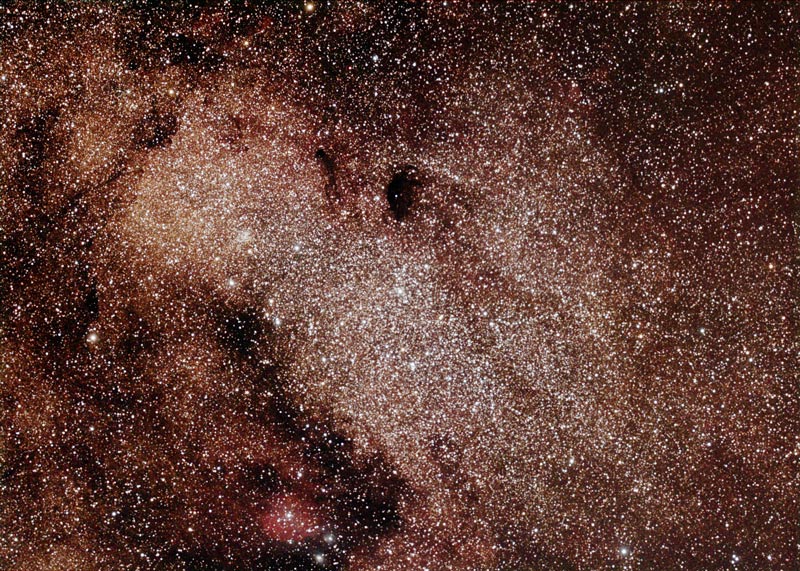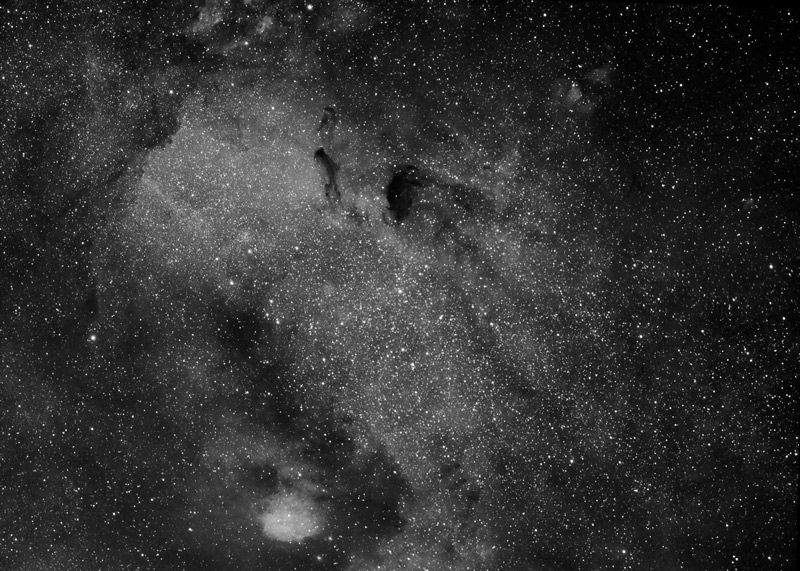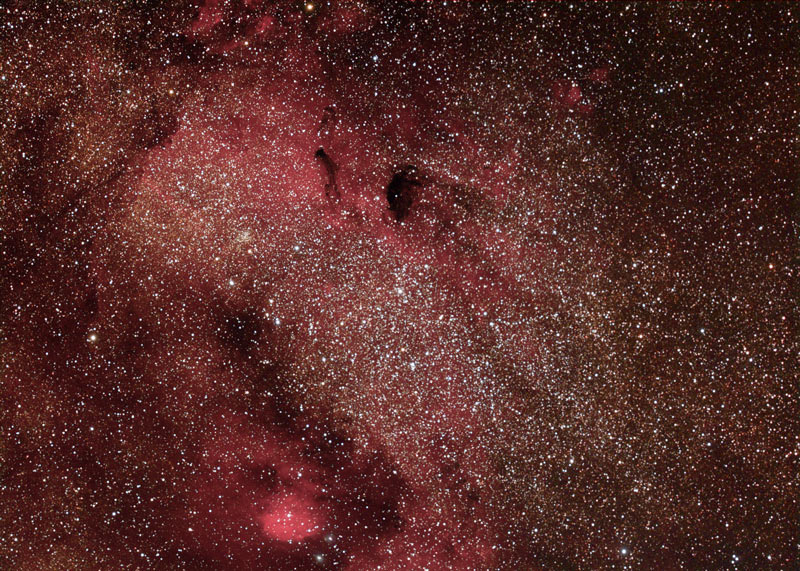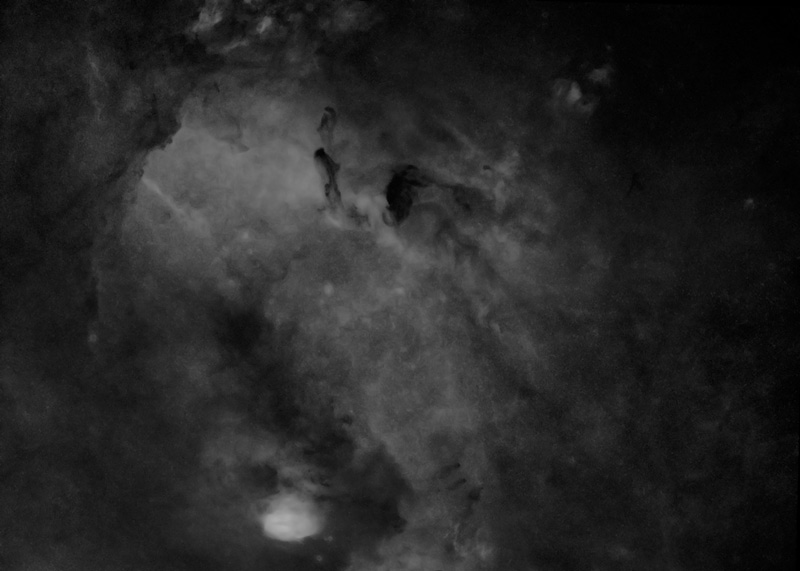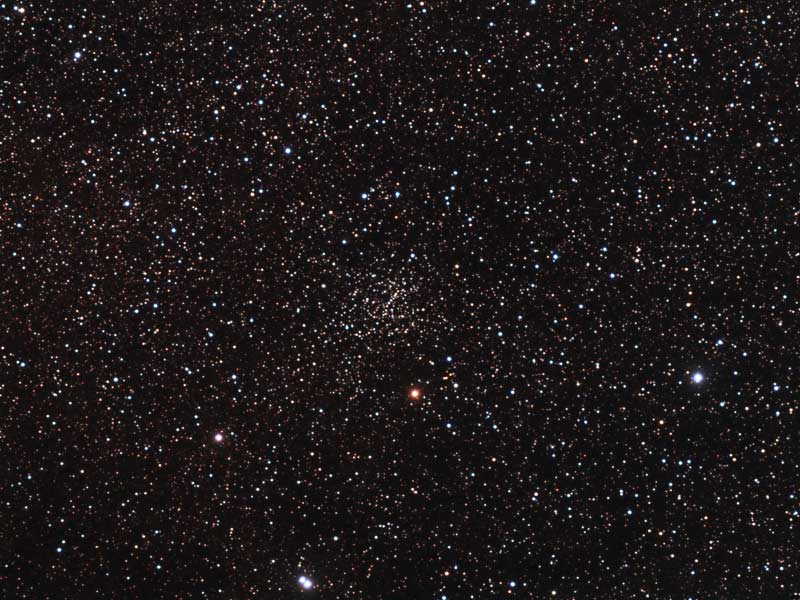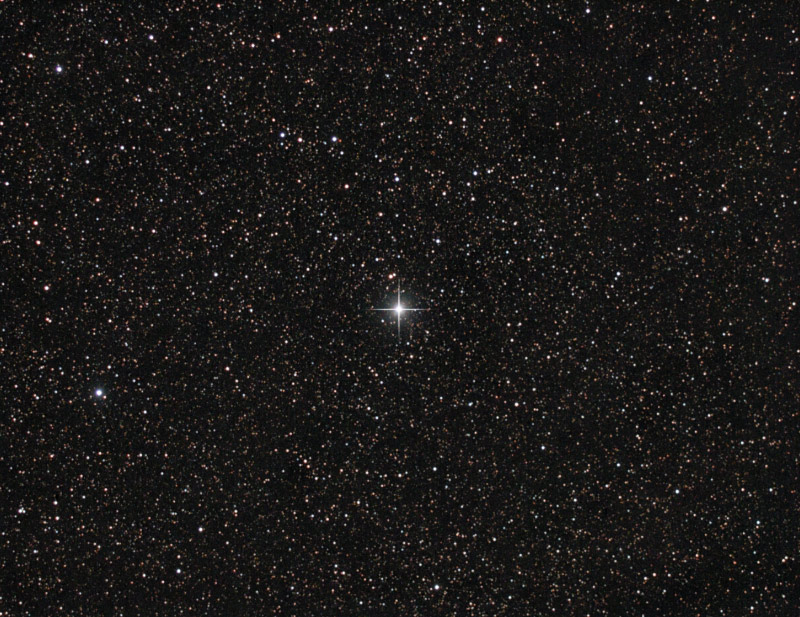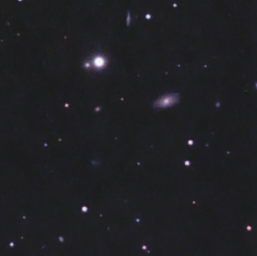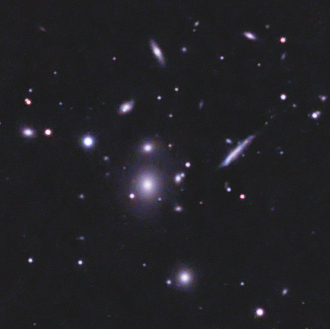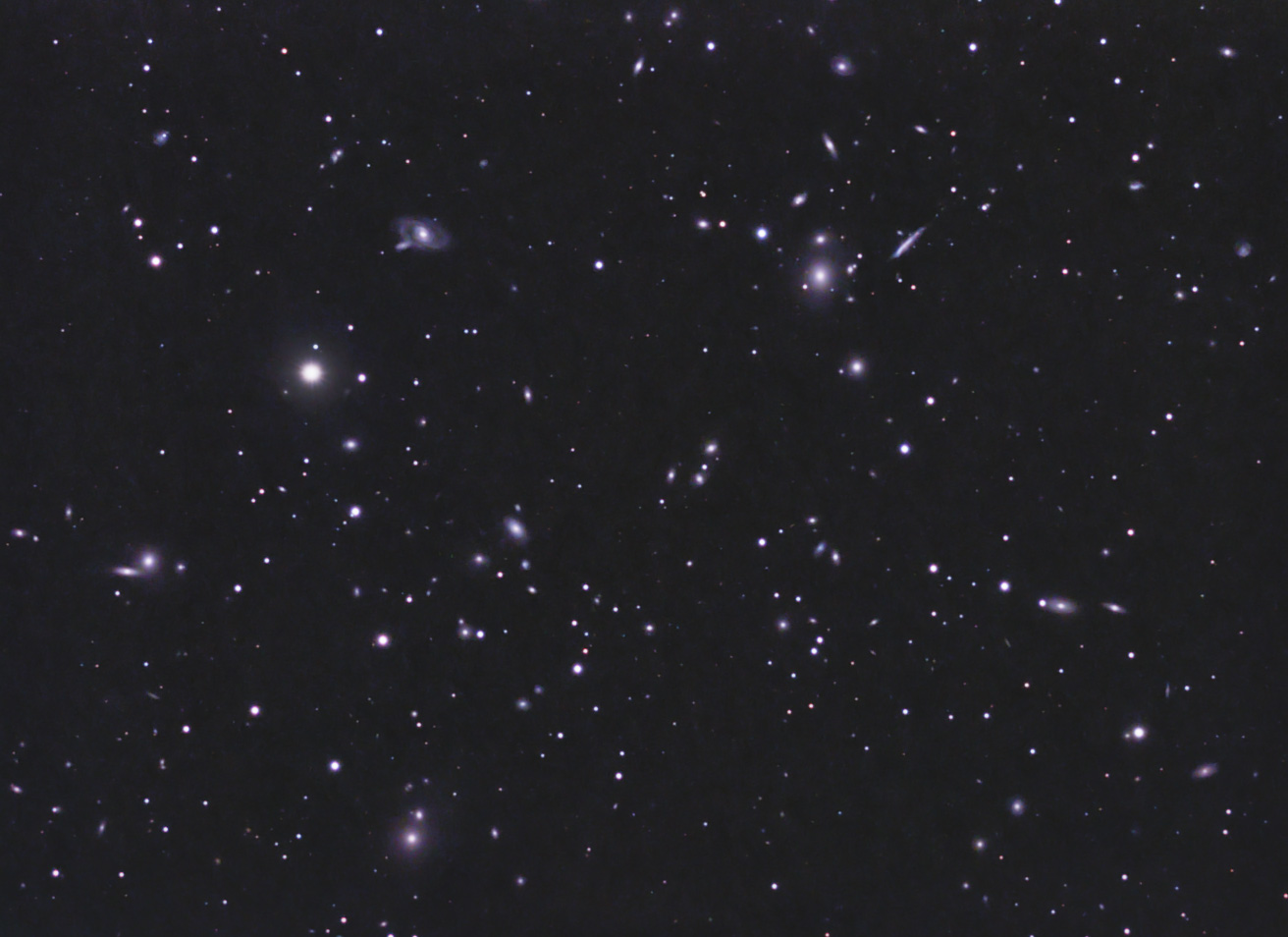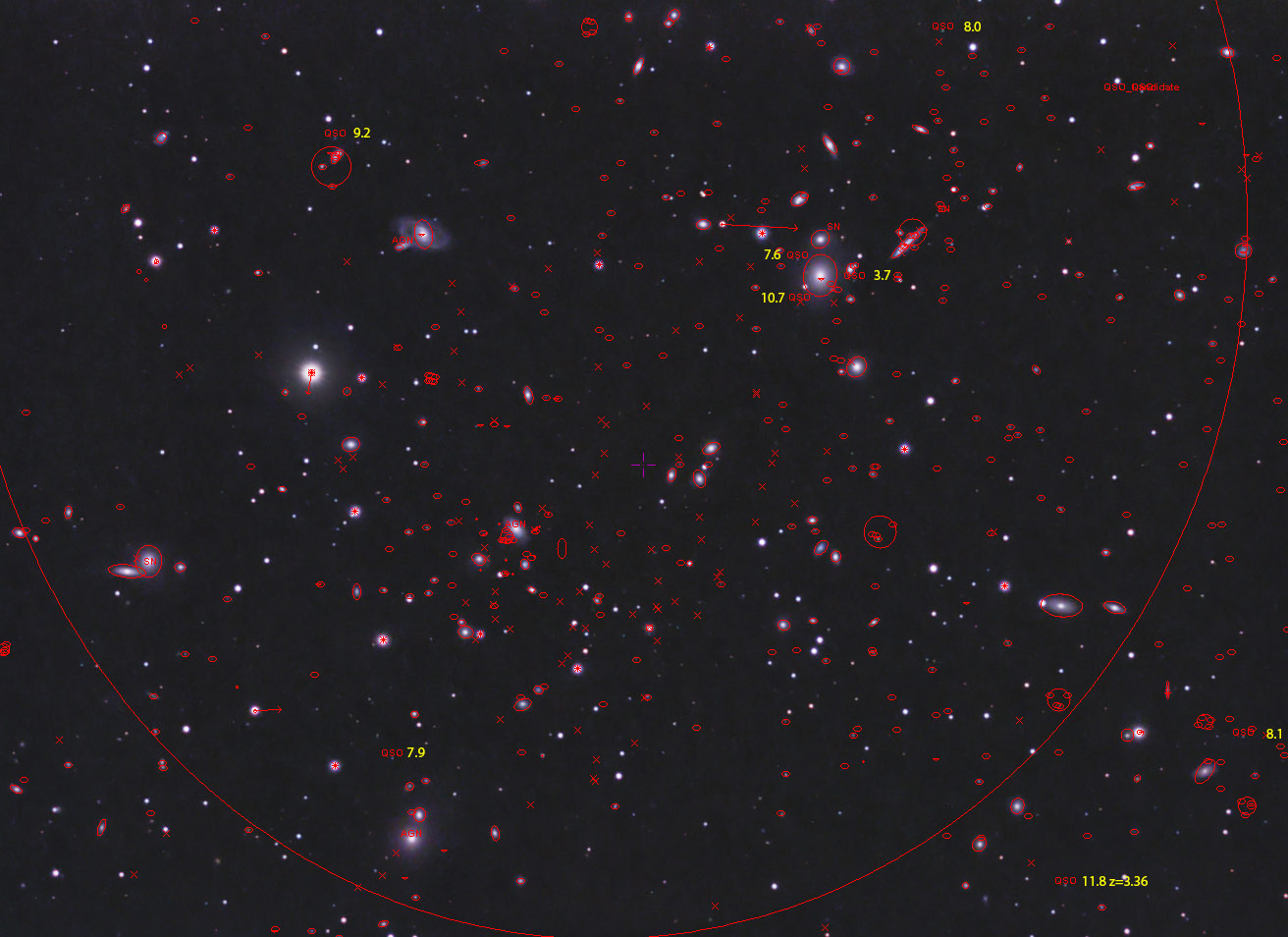when distances get very large, astronomers measure the "red shift"
of light to determine distances:
more distant objects are moving away more rapidly due to the
expansion of the universe
and therefore the light from these objects is shifted further to
longer wavelengths (more red) by the Doppler effect*
this was part of Hubble's big thing,
took two very cool discoveries:
1 certain fuzzy patches had shockingly large redshifts suggesting they are
"island universes" (galaxies) much further away than we had imagined.
2 a special type of variable star has a period proportional to it's
absolute brightness, which means they can be used to measure
distances with reasonable accuracy by comparing the measured brightness to the absolute brightness.
Hubble combined these discoveries, plotting distance to galaxies versus red shift
and found more distant galaxies were moving away more rapidly
proving the expansion of the universe
Abell 1367 has a redshift of 2.2%
this means that hydrogen alpha emissions at 656 nm will be shifted to 700 nm
completely out of the range of my narrow band Ha filter (5 nm centered at 656)
fortunately, i have an SII filter centered at 672 nm with a 12nm band width
allowing me to catch redshifted hydrogen emissions with a filter designed for sulfur
which is a cool trick, part of why i picked the cluster
though subtle, i caught one galaxy that definitely shows enhanced Ha emissions:
The upper right tail of this edge-on spiral galaxy (UGC 6697) is clearly blue
(due to active young star formation) in standard images
but has a red patch in the middle of the blue with the SII (Ha)
enhanced images
and possibly a more subtle red area around the bright core
due to hydrogen emissions in a large nebula (often found in star
forming regions)
or active galactic nucleus = black hole feasting on stars emitting high energy photons as it rips apart matter
there were two much more subtle regions
the upper arm of the small spiral galaxy NGC 3861b:
and the red smile in this faint irregular galaxy KUG 1140+202A:
:-)
*technically not the Doppler effect in this context









